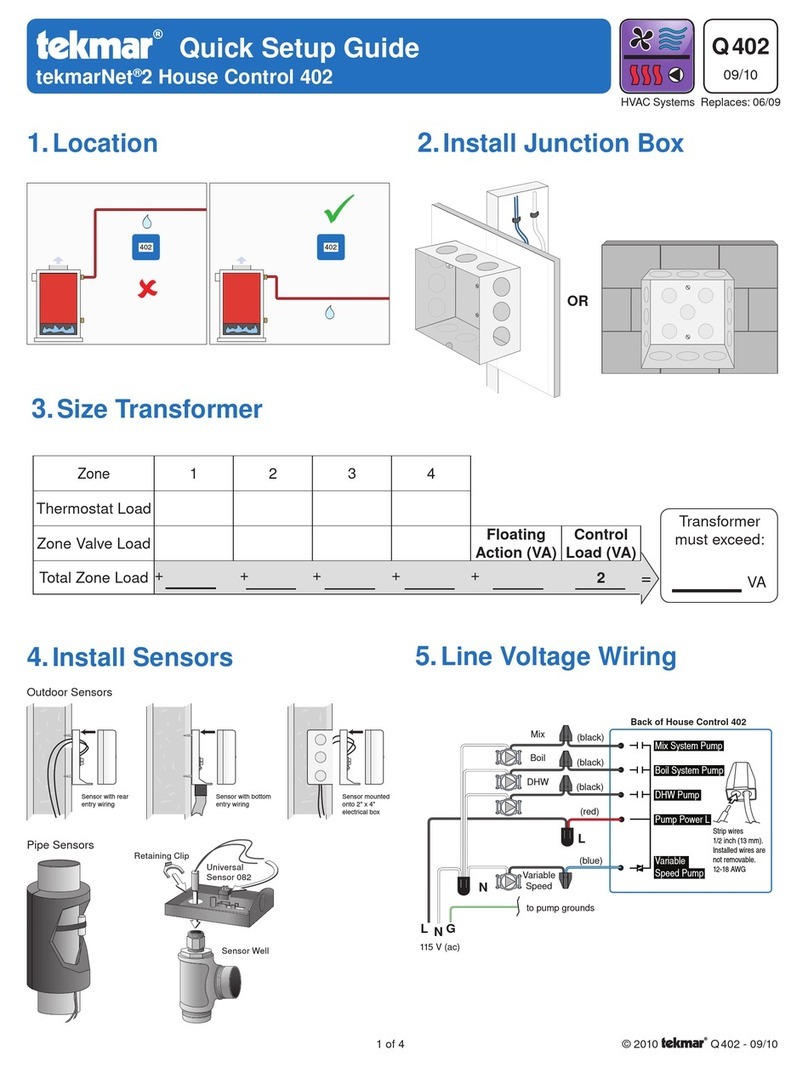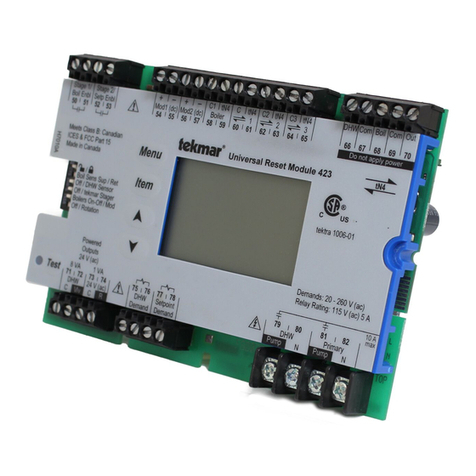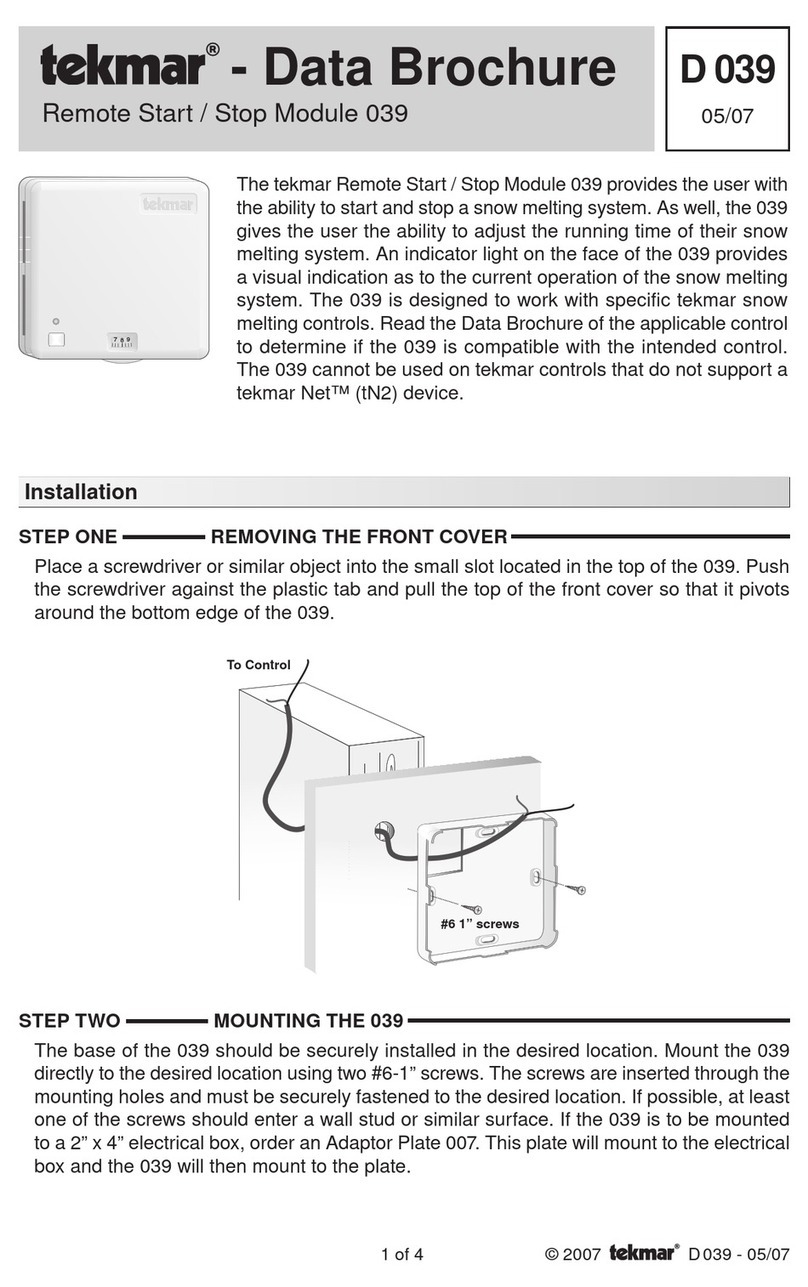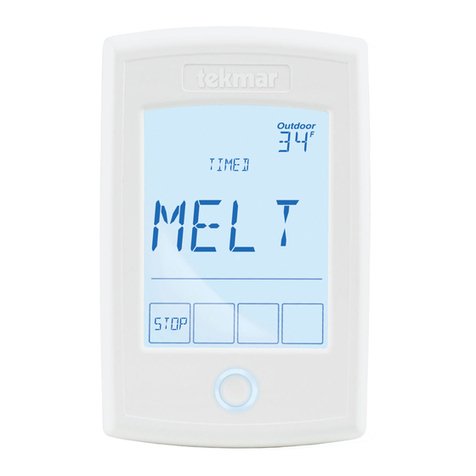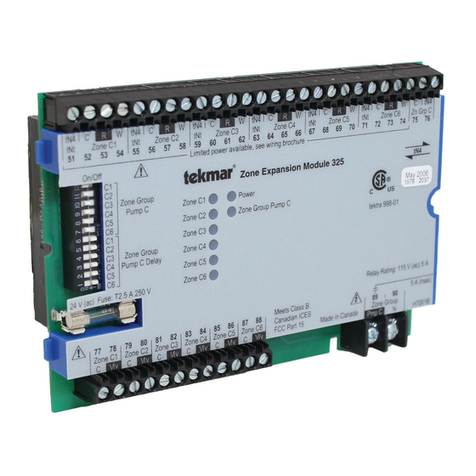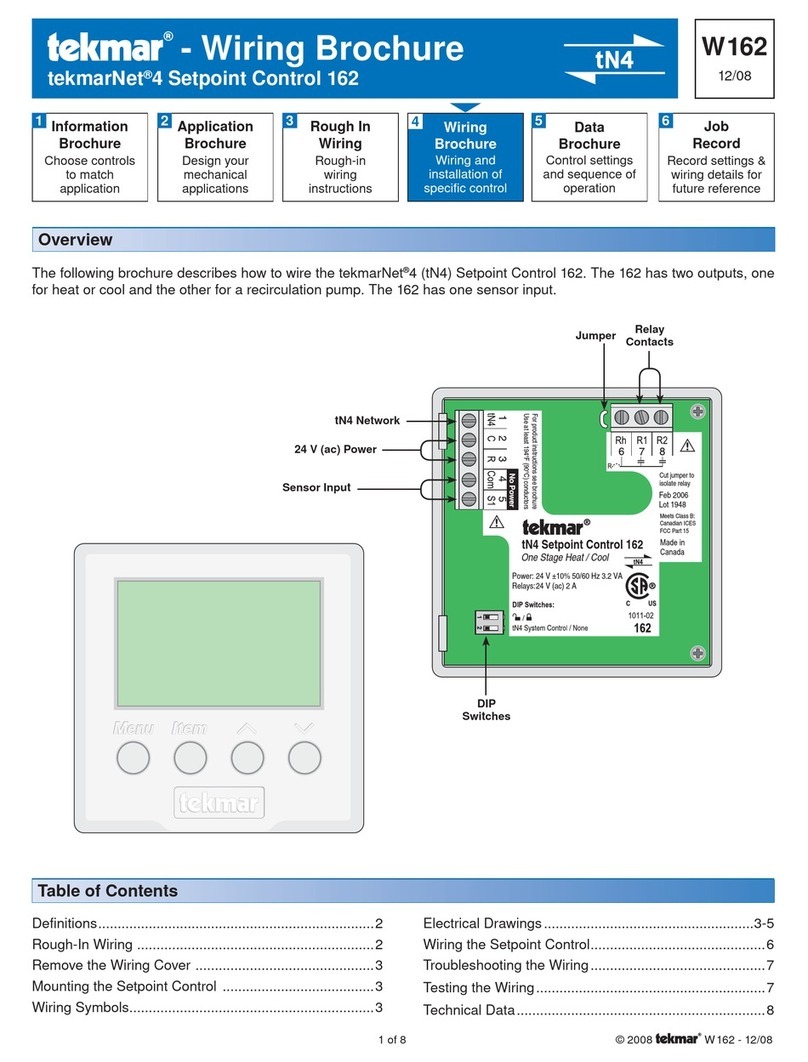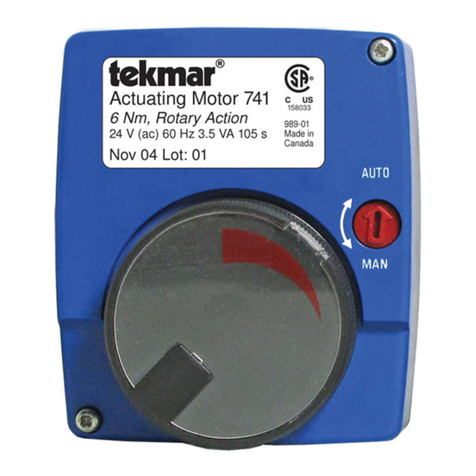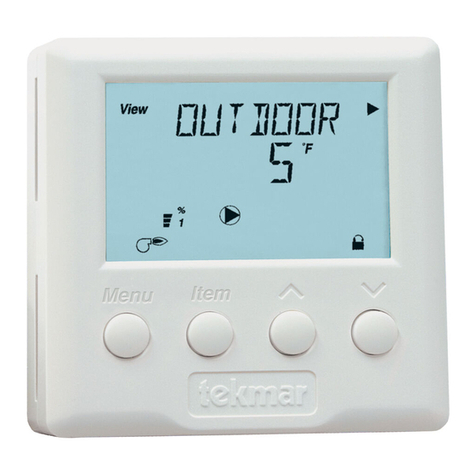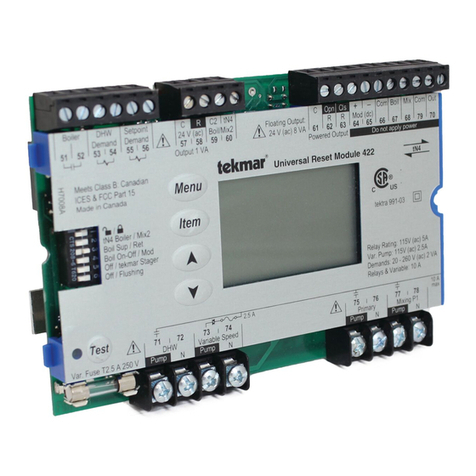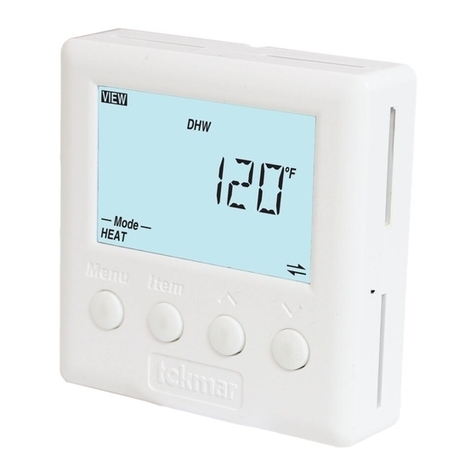
In North America: tekmar Control Systems Ltd., Canada
tekmar Control Systems, Inc., U.S.A.
Head office: 4611 - 23rd Street
Vernon, B.C. Canada V1T 4K7
Tel. (604) 545-7749 Fax. (604) 545-0650
All specifications are subject to change without notice.
Printed in Canada on recycled paper.
Product designs and literature are Copyright © 1993 by:
tekmar Control Systems Ltd. and tekmar Control Systems, Inc. 4
Differential
Setting the Differential on any control depends entirely on the actual operating characteristics of heating/cooling equipment in a
specific application. Differential settings should normally be set as small as possible for greatest accuracy, but care must be taken
toavoidshortcyclingofequipment. Experience,plustrialanderrorduringactualoperatingconditionsisusuallythewaymostinstallers
determine the correct differential setting.
Delay
Setting the Time Delay also depends on the actual operating characteristics of heating/cooling equipment in a specific application.
With some equipment, time delays are unnecessary and the delay setting can be set to zero time delay. Other types of equipment
depend on a fixed off delay to prevent damage to equipment components, particularly in the case of certain types of refrigeration
equipment. Consult the manufacturer's operating and installation instructions for advice on recommended time delays.
Limited Warranty: tekmar warrants to the original purchaser each
tekmar product against defects in workmanship and materials when the
product is installed and used in compliance with tekmar's instructions.
This limited warranty covers the cost of parts and labour provided by
tekmar to correct defects in materials and/or workmanship. Returned
products that are fully operational are not considered a warranty case.
tekmaralsodoesnotcoverpartsorlabourtoremove,transportorreinstall
a defective product. tekmar will not be liable for any damage other than
repair or replacement of the defective part or parts and such repair or
replacement shall be deemed to be the sole remedy from tekmar. This
warranty shall not apply to any defects caused or repairs required as a
result of unreasonable or negligent use, neglect, accident, improper
installation, or unauthorized repair or alterations. In case of defect,
malfunction or failure to conform to warranty, tekmar will, for a warranty
period of 24 months from the date of invoice to the original purchaser or
12 months from the date of installation of the product, whichever occurs
first,repair,exchangeorgivecreditforthedefectiveproduct. Anyexpress
or implied warranty which the purchaser may have, including
merchantability and fitness for a particular purpose, shall not extend
beyond 24 months from the date of invoice or 12 months from the date of
installation of the product, whichever occurs first.
Replacements: tekmarcansend replacementproducts ifrequested. All
replacements are invoiced. Any possible credit for the replacement will
only be issued once the replaced product has been returned to tekmar.
Product Return Procedure: Products that are believed to have failed
must be returned to tekmar Control Systems Ltd. 4611-23rd Street,
Vernon B.C. Canada V1T 4K7 when agreed to by tekmar. The installer
or other qualified service person must,
at the owner's expense, determine which component has failed. The
product must be returned complete with all of its components (sensors,
base, etc.). Products must be returned together with the proof of
purchasetotheoriginalpurchaserwhothenreturnstheproducttotekmar
afterreceivingaReturnGoodsAuthorization(RGA)numberfromtekmar.
Please include the following information with the product. The full
address of the original purchaser, the RGA number and a description of
the problem.
From the U.S.A., in order to avoid customs charges, products must be
returned via US Post with the package clearly marked with the RGA
number, product type and the statement "Canadian Product returned for
repair". For shipping purposes the product can be valued at one half list
price.
1) If returned during the warranty period and the product is defective,
tekmar will issue full credit for the returned product less cost of missing
parts.
2) If returned during the warranty period and the product is fully opera-
tional,tekmar willreturntheproductto theoriginalpurchaserfora testing
cost of $30.00 plus postage.
3) Ifreturnedduringthewarrantyperiod andthe productisnotdamaged
and is fully operational, tekmar can take back the product for a return
chargeof40%oftheproduct'snetvalue. Thisrequesthastobespecified
otherwise the product will be returned with a testing cost of $30.00 plus
postage.
4) If returned after the warranty period and the product needs repair,
tekmar will repair and return the product. Repair and postage costs will
beinvoiced. tekmar'srepaircostsarecalculatedat$30.00/hourplus the
costofparts. Iftherepaircostswillbemorethan$60.00 arepairestimate
will be sent to the original purchaser.
Before you leave
• Install the wiring cover over the wiring chamber and secure it with the screw provided. • Place the front cover on the control to
coverthesettingdialsandsnapitintoplace. • Placethisbrochure,andallotherbrochuresrelatingtotheinstallation,intheprotective
plasticbagsuppliedwiththecontrol. • Placethebaginaconspicuouslocationnearthecontrolforfuturereference. • Itisimportant
to explain the operation of this control within the system to the end user, and anyone else who may be operating the system.
If troubleshooting becomes necessary with the Two Stage Setpoint Control 152, follow the testing procedure in step four of the
installation procedure on page 2 of this brochure.
If the display window shows “Err 1” or “Err 2”, sensor (S1) or (S2) is either open circuited, short circuited, or the sensor temperature
is outside the temperature range of the control. If this type of fault occurs, the control will turn off its relays in order to shut down the
heating or cooling equipment it is controlling.
If the display window flashes “prgm Err” when using a single sensor, the “heat/cool” differential setting is to small. Check setpoints
anddifferentialstoensure that atleast3°Fexists between theheatingsetpointplus1/2 its differentialandthecoolingsetpoint minus
1/2 its differential.
If you do not think the control is operating properly, check to see that the settings have been made correctly and that the problem is
not a result of external causes. Make sure that all wiring connections are solid and the sensor(s) is located in the correct location.
Testing and Troubleshooting
Limited Warranty and Product Return Procedure
